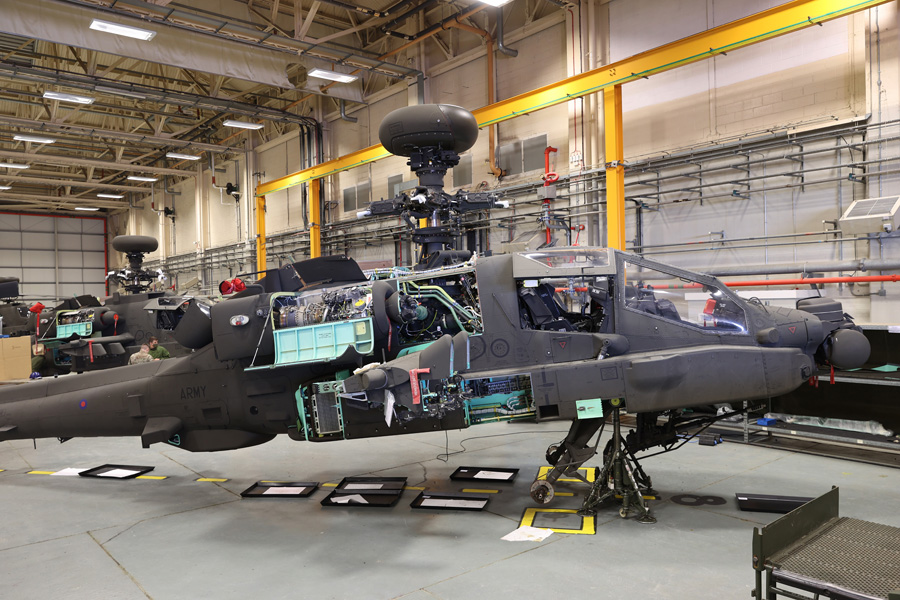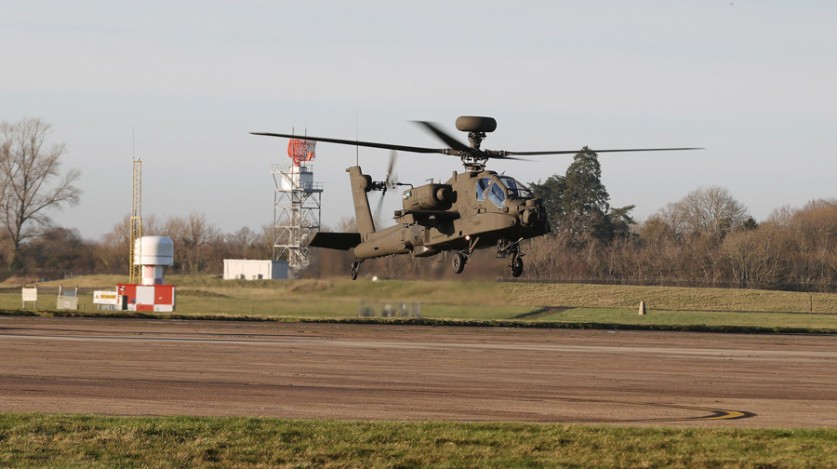Boeing signs long-term Apache service contract with UK Ministry of Defense
Boeing and the UK Ministry of Defense have signed an agreement for Boeing to provide training, support and long-term support for the British Army’s new fleet of 50 AH-64E Apache helicopters.
The announcement was made by Defense Procurement Minister Jeremy Quin MP as he visited Wattisham Flying Station to view the AH-64E Apache.
“There is no doubt that these impressive Apache helicopters will help the Army maintain its winning capabilities in future operations,” said Defense Procurement Minister Jeremy Quin. “In addition to its vital defense purpose, this advanced technology will create and support hundreds of jobs in the UK.”
Under the new $348 million Long Term Training and Support Services (LTTSS) contract, Boeing will work closely with the British military to provide maintenance and engineering support, a chain procurement and logistics management in Wattisham. Boeing will also provide flight crew and maintenance training from its state-of-the-art Middle Wallop facility.
The new agreement, which will run until 2040, will create more than 200 jobs in the UK in the first four years, including more than 165 at the Army Aviation Center Middle Wallop and 45 at Wattisham Flying Station, as well as dozens more with suppliers in the UK. Boeing already has more than 40 employees working alongside Army Air Corps personnel training the Mk1 Apache.
In addition to new Boeing roles, training and support for the new Apache model will bring new roles and opportunities for Boeing’s supply chain in the UK. Yeovil-based Kuehne & Nagel will provide a warehouse management service in Wattisham with a dispersed store in Middle Wallop, creating 45 new jobs. H&S Aviation will carry out engine repair and overhaul in Portsmouth, under contract to GE Aviation.
Cheltenham-based Pennant will also supply additional simulated training systems to Boeing under the contract, supplying several new and improved part-task trainers with Model E compatibility, supporting around 50 high-skilled jobs in the region.
Fifty Apache AH-64Es have been purchased to provide state-of-the-art attack aviation capability that will be a key part of how the military fights for decades to come, as outlined in the Future Soldier vision.
The AH-64E features a new transmission and rotor blades to improve flight performance; improved sensors to detect the enemy; communication systems to share data with other helicopters, unmanned aircraft systems and ground forces as part of a network; and integrated maintenance diagnostic systems to increase aircraft availability.
3 Regiment Army Air Corps will be the first unit to deploy the new AH-64E, with engineers and crews taking training courses in the United States to prepare to work with the helicopter. The unit’s hangars at Wattisham Flying Station are manned by soldiers from the Royal Electrical and Mechanical Engineers carrying out technical checks on aircraft delivered from the United States, with flight testing underway.
The AH-64E replaces the Apache Mk. 1 are currently served by 3 and 4 Regiment Army Air Corps, which entered service in 2001 and proved to be a winning asset in combat in Afghanistan and Libya.
The AH-64E is the most advanced variant of the Apache. It is designed and equipped with an open systems architecture, including the latest communication, navigation, sensor and weapon systems. It also includes advanced digital connectivity, a joint tactical information distribution system, the ability to control unmanned aerial vehicles (UAVs), and new composite main rotor blades. With 14 of the new variant already in the UK, the new Apache AH-64E fleet will grow to 50, with deliveries due to be completed in 2024.
“We are proud to provide the support necessary to ensure mission readiness and optimize the full capability of the AH-64E Apache fleet, which will bring a significant increase in capability to the British Army,” said Anna Keeling, Director general of Boeing Defence. UK. “New Apaches join the Poseidon fleet at RAF Lossiemouth, the Wedgetail modification works at Birmingham, the Chinooks undergoing major upgrades in Hampshire and the C-17s at RAF Brize Norton, which underpin the airlift capability strategic platform – all Boeing platforms, serving the British military forces and delivering economic benefits across the country.
Two of the three simulated Longbow Crew Trainer devices for the Model E are already in the UK. The first was declared “ready for training” at the end of 2020 and the second is currently being tested and installed. The third and final is expected to be delivered in 2022. Located with frontline Army Air Corps Apache squadrons, the aircraft will play a key role in transitioning aircrew to the new variant.

Fifty Apache AH-64Es have been purchased to provide state-of-the-art attack aviation capability that will be a key part of how the military fights for decades to come, as outlined in the Future Soldier vision.
The AH-64E features a new transmission and rotor blades to improve flight performance; improved sensors to detect the enemy; communication systems to share data with other helicopters, unmanned aircraft systems and ground forces as part of a network; and integrated maintenance diagnostic systems to increase aircraft availability.
3 Regiment Army Air Corps will be the first unit to deploy the new AH-64E, with engineers and crews taking training courses in the United States to prepare to work with the helicopter. The unit’s hangars at Wattisham Flying Station are manned by soldiers from the Royal Electrical and Mechanical Engineers carrying out technical checks on aircraft delivered from the United States, with flight testing underway.
The AH-64E replaces the Apache Mk. 1 are currently served by 3 and 4 Regiment Army Air Corps, which entered service in 2001 and proved to be a winning asset in combat in Afghanistan and Libya.


Comments are closed.